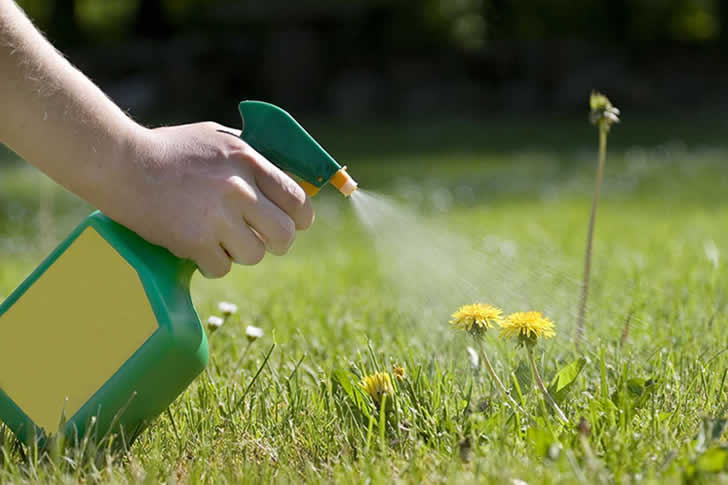Removing Weeds Methods Most People Might Not Know About
Weeds can be a persistent problem for gardeners and homeowners alike. While many people are familiar with traditional methods like pulling weeds by hand or using chemical herbicides, there are several lesser-known techniques that can be just as effective, if not more so. Check these fllowing methods that are not only environmentally friendly but can also save time and money.

1. Flame Weeding
- Price Range: $40 – $150 for a basic flame weeder
- Advantages: Flame weeding involves using a propane torch to apply intense heat directly to weeds, causing them to wilt and die. This method is highly effective for controlling weeds in driveways, sidewalks, and garden beds without the use of chemicals. Flame weeding is particularly advantageous because it kills weeds at the root, preventing regrowth. It’s also quick, covering large areas in a short amount of time. Additionally, flame weeders are affordable, with basic models available for under $100.
2. Vinegar Solution
- Price Range: $3 – $10 per gallon of vinegar
- Advantages: Using a vinegar solution is a simple and cost-effective way to kill weeds. White vinegar, especially those with higher acetic acid concentrations, acts as a natural herbicide by dehydrating the plant. It’s ideal for spot-treating weeds in garden beds, sidewalks, or driveways. Vinegar is non-toxic to humans and pets, making it a safe alternative to chemical herbicides. Moreover, it’s an inexpensive option, as a gallon of vinegar costs just a few dollars, making it accessible for large-scale use.
3. Solarization
- Price Range: $20 – $50 for plastic sheeting
- Advantages: Solarization is a natural method that involves covering the soil with clear plastic sheeting to trap heat from the sun. The intense heat generated under the plastic kills weeds and their seeds. This method is especially effective for preparing garden beds or large areas of soil before planting. Solarization is advantageous because it’s completely chemical-free, promoting a healthy soil ecosystem. It’s also a long-term solution, as it kills weed seeds in addition to the mature plants, reducing future weed growth.
4. Boiling Water
- Price Range: Free (cost of water) – $20 for a specialized pouring container
- Advantages: Pouring boiling water directly onto weeds is one of the simplest and most effective weed control methods. The extreme heat destroys the plant’s cell structure, killing it almost instantly. This method is particularly useful for weeds growing in cracks in sidewalks, driveways, or between pavers. Boiling water is 100% natural and leaves no harmful residues in the soil. It’s a zero-cost method for those who already have access to boiling water, making it one of the most affordable weed removal techniques.
5. Mulching
- Price Range: $3 – $5 per bag of mulch
- Advantages: Mulching involves covering the soil with a thick layer of organic material, such as wood chips, straw, or leaves. This method suppresses weed growth by blocking sunlight and creating a barrier that prevents weed seeds from germinating. Mulching also conserves soil moisture, reduces erosion, and improves soil health over time. The cost of mulching is relatively low, and it provides long-lasting results, making it a cost-effective and environmentally friendly weed control solution.
Benefits of These Weed Removal Methods for Seniors
- Reduced Physical Strain: Many of these methods are designed to minimize the physical effort required, making them ideal for seniors.
- Environmentally Friendly: These methods are often chemical-free, reducing the environmental impact and ensuring safety for both the gardener and the surrounding ecosystem.
- Cost-Effective: Several methods use inexpensive or readily available materials, making them affordable for anyone on a fixed income.
- Ease of Use: With simple techniques and easy-to-use tools, these methods are accessible even to those with limited gardening experience.
Frequently Asked Questions (FAQ)
Q1: Are these weed removal methods safe for my garden?
- A1: Yes, all the methods mentioned are safe for your garden. They do not involve harmful chemicals, and many of them improve soil health over time.
Q2: How often do I need to apply these methods?
- A2: Frequency depends on the method. For example, boiling water and vinegar may need reapplication as new weeds appear, while mulching and solarization offer longer-lasting results.
Q3: Can these methods be used in large areas?
- A3: Yes, methods like solarization and mulching are particularly effective for large areas. Flame weeding is also efficient for covering wide spaces quickly.
Q4: Do these methods work on all types of weeds?
- A4: These methods are effective on most common weeds. However, persistent or deep-rooted weeds may require multiple applications or a combination of methods.
Price Comparison Table with Affordability Score
| Weed Removal Method | Price Range (USD) | Advantages | Affordability Score |
|---|---|---|---|
| Flame Weeding | $40 – $150 | Kills weeds at the root, quick coverage, no chemicals | 8/10 |
| Vinegar Solution | $3 – $10 | Non-toxic, easy to apply, low cost | 9/10 |
| Solarization | $20 – $50 | Long-term solution, kills weed seeds, chemical-free | 7.5/10 |
| Boiling Water | Free – $20 | Zero cost, instant results, no harmful residues | 9.5/10 |
| Mulching | $3 – $5 per bag | Suppresses weeds, conserves moisture, improves soil health | 8.5/10 |
Conclusion
Weed control doesn’t have to be expensive or harmful to the environment. These lesser-known methods offer effective alternatives to traditional chemical herbicides, providing long-term results while being safe for your garden and the planet. Whether you choose to use boiling water, apply vinegar, or invest in a flame weeder, these techniques can help keep your garden weed-free and thriving.
References







Recent Comments